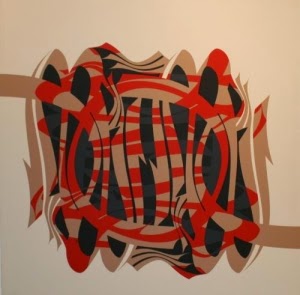Visual Language & Mass-Consumption: The Global Marketplace 1950-1990 13 January 2015
We were lectured about the growth of youth culture this morning and the birth of the teenager. Young people were working and had incomes of their own. They made their own decisions on how to spend it. Copying film stars fashion and wanting places to meet such as Soda Bars with Juke Boxes saw the birth of what was termed Youth Culture which in turn spread from America to Europe.
The task for this afternoons lecture on The Atomic Age & Cold War is to show how it affected art and design from the Russian, American and British perspective.
The space race between America and Russia led to a film by Stanley Kubrick called, 2001: A Space Odyssey which was nominated for an Oscar.
http://www.theguardian.com/arts/gallery/2008/apr/21/artnews.design
A still of a film clip from the film 2001: A Space Odyssey 1968
A still of a film clip from the film 2001: A Space Odyssey 1968
The Kitchen Debate Moscow - Nixon and Khrushchev 1959
At the American Exhibition in Moscow both men appeared together and had differing views of the exhibit. Khrushchev stating that the ordinary American family would not be able to afford what was on display and Nixon stating that they could. Then Khrushchev stating that Russian kitchens would last longer. The debate went on.....
Campaign for Nuclear Disarmament March 1961
1961http://news.bbc.co.uk/onthisday/hi/dates/stories/april/18/newsid_2909000/2909881.stm
Photography started to be used in portraying the news of the day along with film images for television news. The campaign for nuclear disarmament known as CND had a logo created by Gerald Holtom who used the semaphore letters of N(uclear) & D(isarmament) to make the memorable logo which represents their cause. Aldermaston had an atomic weapons establishment which made nuclear warheads and the protesters wanted it closing down.
The Campaign for Nuclear Disarmament Logo
The logo of the Atomic Weapons Establishment













